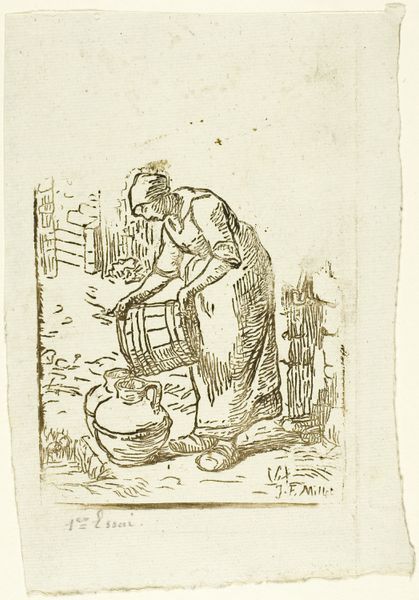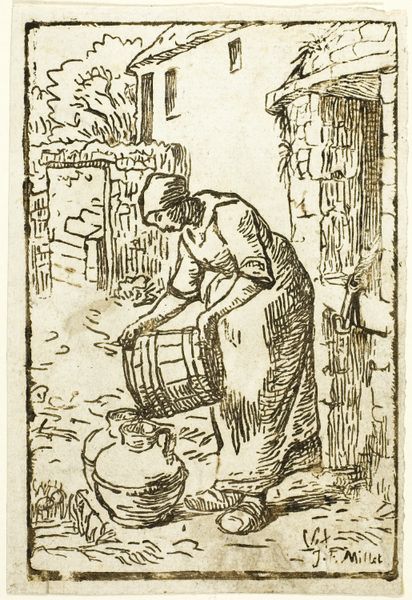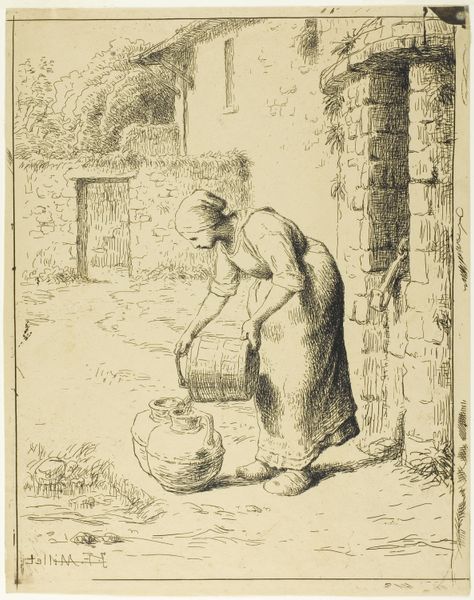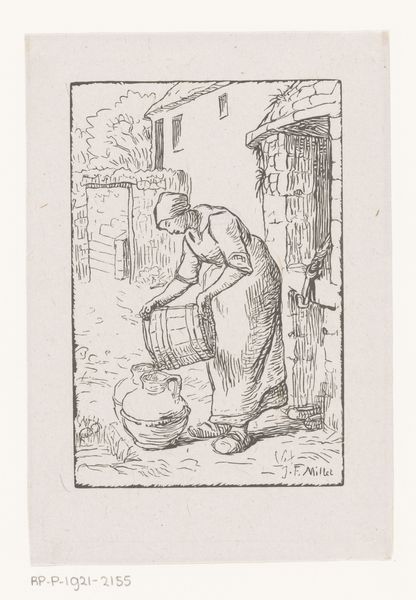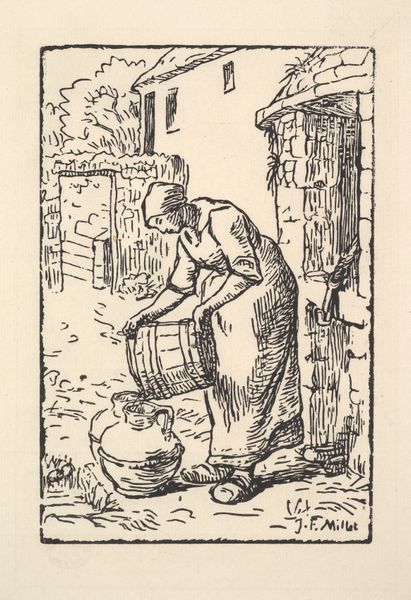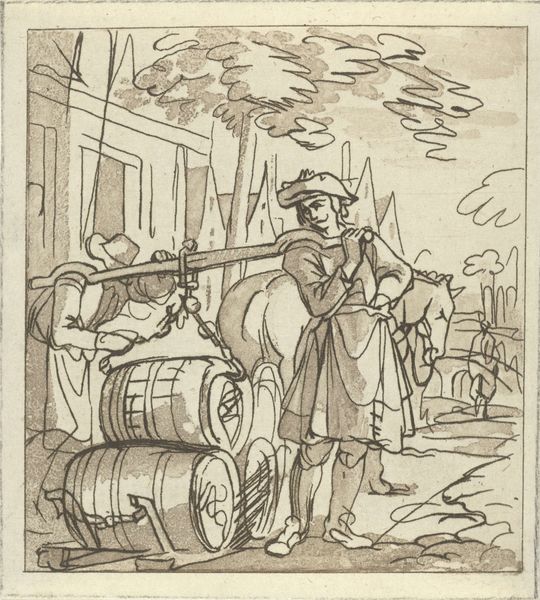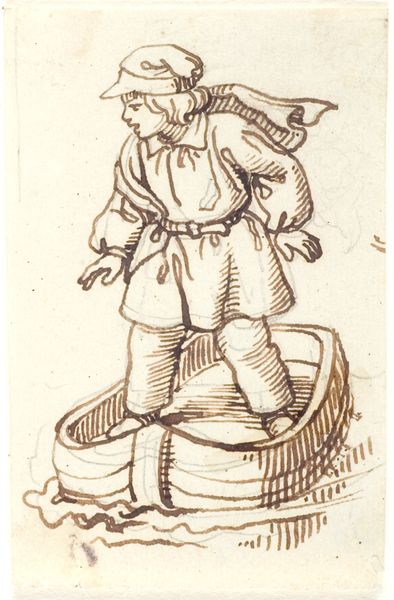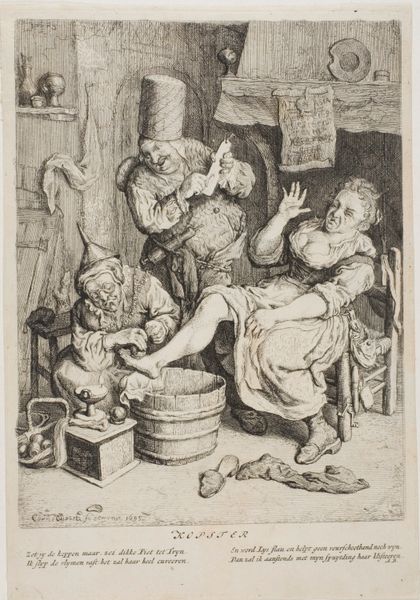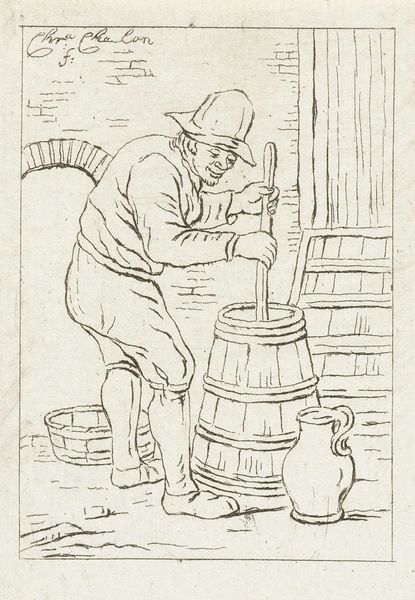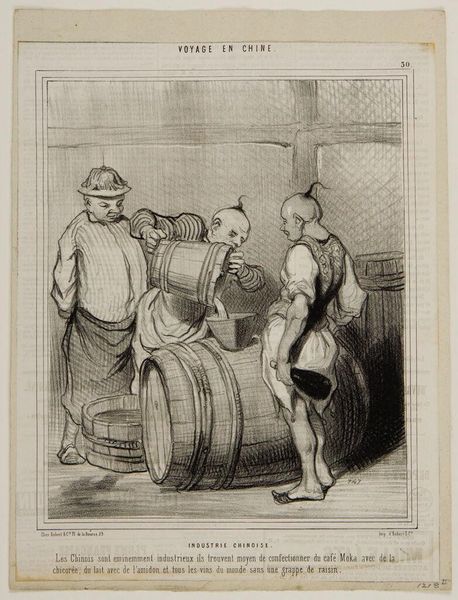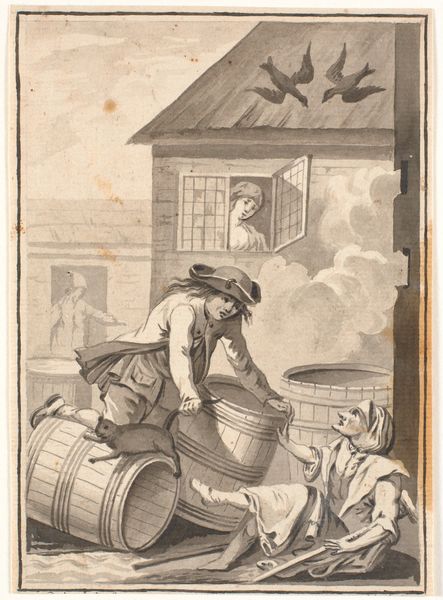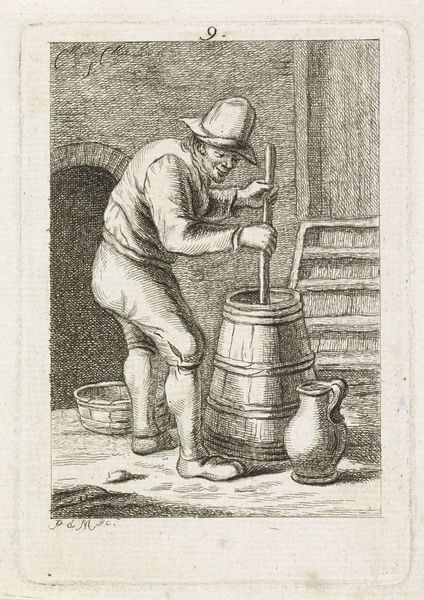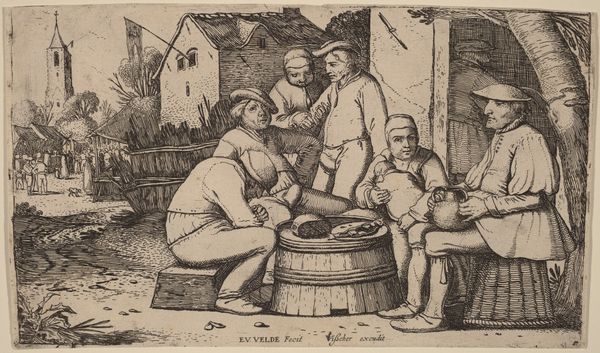
Dimensions: 103 × 96 mm (image); 165 × 121 mm (sheet)
Copyright: Public Domain
Editor: So, here we have Pierre Millet's "Woman Filling Water-Cans," an etching from 1854 currently residing at The Art Institute of Chicago. It’s a simple scene, a woman attending to a very basic, everyday chore, and yet something about the sketchiness of the etching gives it a rather raw, unidealized feel. What do you see in this piece, in terms of its cultural context? Curator: It’s fascinating how Millet, associated with the Realist movement, elevates the everyday labor of rural women, but let’s think about the role of art institutions at the time. Realism emerges during a period of huge social and political change. Courbet’s groundbreaking and defiant exhibition of "The Stone Breakers," a few years prior, established this idea of presenting ordinary laborers at this scale. So, how did showing the hardship or laboring classes affect social change at the time? Was it an honest attempt to bring attention, or further condescension of class difference? Editor: I suppose that art buyers during that time had an agenda, and there were complex factors involved, making it difficult to define Realism, as it also was adopted as part of Romanticism… Do you see any Romanticist influence here? Curator: I do. It focuses on a common woman. Before Realism, those women may not have been elevated like this, or they would be a mythological representation. The choice to depict labor becomes a powerful act, challenging established hierarchies within the art world. In what ways did museums, or salons, shape that interpretation and control the market’s perception? Did they encourage this subject or discourage? Editor: Right, it all comes down to institutions shaping perceptions. Thanks, I’m starting to understand a little better how Realism’s purpose might be twisted in Romanticism at that period. Curator: It's not just about Millet's intentions but also about how his work functioned within a system that, at its best, offered visibility to the working class, and, at its worst, potentially romanticized poverty. It really shows the complex social landscape during the rise of Realism.
Comments
No comments
Be the first to comment and join the conversation on the ultimate creative platform.
